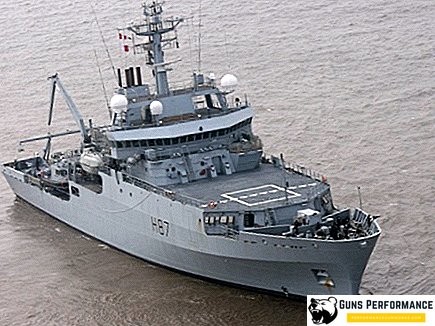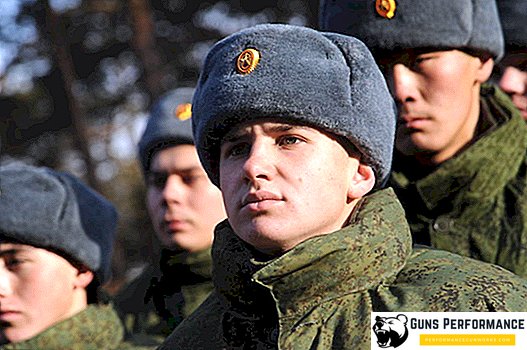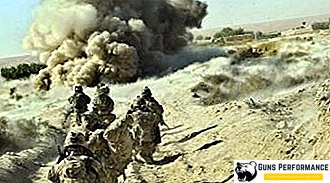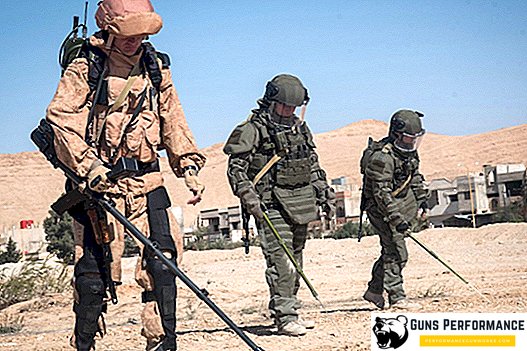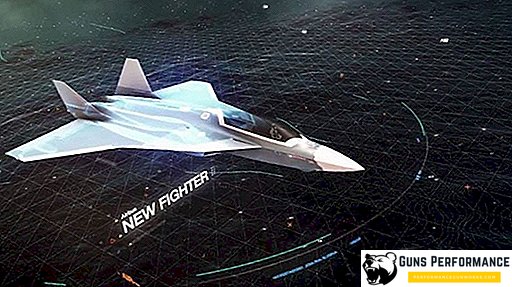At the very beginning of World War II, the Axis countries managed to capture vast territories. The power of the German and Japanese weapons was undeniable, it seemed that no one could resist them. However, the successful march of the aggressor was discontinued as a result of a grand fracture that occurred in 1942-1943. The most important battle that marked the beginning of this change and had a tremendous impact on the balance of power in Europe is the battle of Stalingrad (today's Volgograd).
The situation in the spring of 1942 before the start of the Battle of Stalingrad
By the spring of 1942, the Red Army, although it had suffered serious losses during the counter-offensive near Moscow, continued to push the Wehrmacht westward. The main directions of the Soviet offensive were directly Moscow and south-west. Here, the Soviet troops planned to liberate the Donbass in the spring and summer of 1942 and destroy the German group on Left-Bank Ukraine. At the same time, hostilities in the Crimea were in progress, but the troops of the Crimean Front there, having occupied the Kerch Peninsula, failed to break into the depths of the peninsula.
The calm on the Soviet-German front came in April, when the Soviet troops, having exhausted the offensive outburst, began to prepare for a large-scale offensive near Kharkov. The front line in the area of the city of Barvenkovo had a protrusion that considerably went into the territory occupied by the Wehrmacht. It was planned to introduce mobile units — tank corps — into it, and, breaking through the enemy's defenses, surround a number of its units. If this operation was successful, the entire southern wing of the German Eastern Front could collapse.

However, history judged otherwise. By this time, the German command also had plans to encircle the Soviet troops in a Barvenk projection, and under conditions when the Soviet troops were already pretty exhausted, this was not difficult to do. Nevertheless, the Soviet offensive, which began in May 1942, was sudden for the Wehrmacht. At the cost of great efforts, the German leadership managed to keep the front near Kharkov from collapsing and at the end of the month launch a counter-offensive, which turned out to be a real catastrophe for the Red Army. 26 Soviet divisions were surrounded and destroyed, about 170 thousand people were taken prisoner. The outcome of the battle of Kharkov in 1942 was that the Red Army almost completely exhausted its reserves and in the spring and summer of 1942 could not conduct offensive operations on the southern wing of the Soviet-German front.
At the same time, on May 7, the 17th German Army began an offensive in the Crimea against the forces of the Crimean Front. This operation, which had the name "Hunt for bustard", achieved success in the shortest possible time. Already by May 15, 1942, Soviet troops on the peninsula were partially defeated, partially evacuated, or hid in Adzhimushkay quarries, where their siege began. After that, the situation on the Eastern front for the Wehrmacht began to once again become favorable. For the offensive, planned for the summer campaign of 1942, there were all the conditions.
Party plans
The Soviet command for the summer-autumn of 1942 planned a series of offensive operations throughout the front. In the north, the purpose of these operations was to eliminate the blockade of Leningrad, in the center - to drop the German troops from Moscow even further. In the south, after the disaster near Kharkov, no serious actions were planned, but private operations were undoubtedly planned.
In contrast to the Soviet leadership, the Wehrmacht command for the summer-autumn of 1942 placed great hopes. They concluded that a major attack was planned on the oil fields of the Caucasus, which, with a successful outcome, could be a disaster for the Soviet Union and a triumph for the Axis countries. The great dependence of Germany (as well as of any other belligerent country) on oil and the impossibility of filling its deficiency at the expense of the allies (Hungary and Romania) additionally forced the German leadership to go on this offensive.
For the offensive in the south, the Wehrmacht command divided the Army Group "South" into two groups. The first - Army Group "A" - had in its composition three armies: 1st Panzer, 17th and 11th. The second group, Army Group B, included the 4th Panzer and 6th Armies. This distribution of forces was due to the fact that the German command initially set the task of seizing the Caucasus higher than the capture of Stalingrad and the access to the Volga in its lower course.
The operation to seize the Caucasus and Stalingrad was to take place in two stages. At the first stage, it was planned to defeat the troops of the Soviet Bryansk and fairly weakened South-Western Fronts and capture Voronezh and the bend of the Don. Then it was planned to launch an offensive in two directions: the southern and the eastern.
The first stage of the German offensive (June 28 - July 17, 1942)

The offensive began on 28 June. Already in the first days, the Wehrmacht managed to break through the defenses of both Soviet fronts and rush deep into Soviet territory. This success of the German army was due to the fact that the Soviet troops were already rather exhausted in previous battles. In the steppes west of the Don, Soviet troops could practically oppose nothing with tank wedges of the Wehrmacht, so the fate of the first stage of the offensive was decided in advance.
However, the Soviet leadership successfully managed to withdraw the troops beyond the Don, without suffering serious losses. Only in the Millerovo area did the Germans manage to encircle and destroy the 80,000th grouping of the Red Army, but this failure was completely beyond comparison with the disaster near Kharkov in May 1942.
Already in early July, German troops came close to Voronezh. The battle for the city began, continuing until February 1943. From the very beginning, the Germans were faced with fierce resistance from the defenders of the city, and the struggle for the capture of Voronezh quickly turned into a positional one. The Hitler command did not attach much importance to the city, and therefore did not allocate any additional forces for the troops storming Voronezh. Until the very end of the battle for the city, the Germans did not manage to master it completely.
The rapid advance of the Germans in the bend of the Don created a great danger to the Soviet territories to the south and east of the river. On July 12, 1942, the Stalingrad Front under the command of S. K. Tymoshenko was formed to cover the Stalingrad (eastern) direction. The front, at different times, included the 21st, 28th, 38th, 57th, 62nd, 63rd, and 64th combined armies, the 8th Air Army, and the Volga Flotilla. However, in July 1942, the Stalingrad Front had only 12 divisions. The troops of the front were given the task of restraining the onslaught of the Germans and not letting them go to Stalingrad. At the same time, on the front from the coast of the Azov Sea to the stanitsa of the Upper Kurmoiarsk attack, the Germans held back the North Caucasus Front. The offensive of the Wehrmacht in July-September rejected his troops down to the northern foothills of the Caucasus.
The beginning of the battle for Stalingrad - fighting on the outskirts of the city (July-September 1942)
Actually, the beginning of the Battle of Stalingrad is considered to be July 17, when the troops of the Stalingrad Front began to conduct defensive battles against the avant-garde of the 6th German Army, which had the goal of crossing the Volga and Don rivers and seizing the city at once. Fighting between the avant-gardes of the 6th army of the Wehrmacht and the 62nd and 64th Soviet armies lasted 5 days, thereby burying the hopes of the Germans for the rapid capture of Stalingrad.
However, in general, the situation remained unfavorable for the Red Army. By the end of July, the Germans managed to force the Don and come close to Stalingrad almost in spite of the stubborn and bitter resistance of the Soviet troops. It was on these days, when in essence the fate of Stalingrad could be decided, a well-known order No. 227 was issued, better known as “Not one step back!” The Soviet leadership needed to keep the enemy at all costs, not to allow him to break into the city at once.
During the defensive battles on the Stalingrad direction there was a gradual equipment defensive lines in the area of the city. Thus, several sapper armies were thrown at Stalingrad, and civilians were also involved in the work. As a result, in July-August defensive lines were ready. This fact, along with the courageous resistance of the troops of the Stalingrad Front, forced the Hitlerite command in July 1942 to reassign the 4th Tank Army to the commander of Army Group "A".
During the first half of August there were stubborn battles between the Don and the Volga, as a result of which the offensive outburst of the German troops began to dry up noticeably. It became clear to the German command that in order to take Stalingrad directly it was necessary to prepare a separate operation. The counterattack of fresh Soviet troops allocated from the Supreme Command Headquarters Reservaire, against the German forces between the Don and Volga rivers, only strengthened this conviction. Began preparing for a decisive offensive.
This offensive began on August 19, and in the early days it achieved great success. Thus, on August 23, the German forces managed to make their way to the Volga north of Stalingrad by a narrow wedge. On the same day, thousands of aerial bombs hit the city itself. The Luftwaffe subjected Stalingrad to horrendous barbaric bombardment, destroying much of the city’s housing stock. About a quarter of the city’s population perished in this terrible air attack. In Stalingrad, everything that the Nazis had already done in Gernick, Warsaw and Rotterdam was repeated.
Defensive battles in Stalingrad (August 23 - November 18, 1942)

From the end of August, fighting broke out on the outskirts of Stalingrad. The Germans, trying to break into the city, suffered serious losses. Not only the troops of the Stalingrad Front stood up to defend the city, but also the militia from factory workers and simply residents of Stalingrad. As a result of these battles, the offensive of the Wehrmacht was again disrupted.

The new offensive of the German troops could only begin on September 13, 1942. The fighting acquired the character of positional, and the front line now ran directly in Stalingrad. Fighting was fought for every street, house, floor, room. In this case, often the collision reached and melee.
This kind of fighting almost instantly reflected on the tactics of the parties. It was during street battles in Stalingrad that tactic of assault groups was widely used when the troops operated in small, up to 30 people groups that had “autonomy” thanks to the recruitment of soldiers of various specialties. Also, the situation in the city has become very suitable for sniper hunting on both sides.
By the end of September, the troops of the 6th German Army succeeded in squeezing out parts of the Soviet 62nd and 64th armies and even breaking through at their junction to the Volga. As a result, the Soviet positions in Stalingrad were significantly weakened. Nevertheless, the Soviet soldiers courageously defended the city. Buildings and districts in Stalingrad became widely known, the courage of their defenders was an unprecedented feat: the Mill, the Department Store, the Pavlov House, the Stalingrad Tractor Plant, the Barricades factory and others.
By early October, the German offensive in Stalingrad was choked. However, the result of the September battles was that parts of the Wehrmacht were able to seize most of Stalingrad and dismember the Soviet group, which fought in the city.

The new German offensive began on October 14, 1942. However, even now the Wehrmacht failed to break through the defenses of the Soviet troops, who stubbornly defended themselves and carried out frequent counterattacks. In the end, the air temperature dropped to -20 degrees, which had its effect on the intensity of the hostilities. In the course of this, the last offensive, the German army managed to crush the 62nd army into three units isolated from each other on the Volga coast. However, the Nazis did not succeed in throwing the defenders of Stalingrad into the Volga. By November 8, the offensive of the Wehrmacht was exhausted, and until the 18th, there were practically no changes in the situation.
Counteroffensive of the Red Army (November 18 - December 31, 1942)
The German army, breaking through to Stalingrad and bogged down in battles for the city, was in grave danger. She saw it in September 1942, the Chief of General Staff Franz Halder. It was he who first stated to Hitler that the situation when the 6th Army slowly bites into the defenses of the Soviet troops, and on the flanks of it, the forces of the Red Army gather are very critical. An additional danger was hidden in the fact that the flanks of the 6th Army were covered very weakly - only by Italian and Romanian units, whose combat capability was always in doubt.
Nevertheless, Hitler refused to listen to F. Halder, arguing that "the main Russian forces have already been subjected to defeat." As a result of the conflict, Halder was forced to leave the post of Chief of the General Staff.
On October 1, 1942, the Soviet Don Front was formed on the northern flank of the German Army Group B, and KK was appointed as its commander. Rokossovsky. The front in the beginning of October made a number of attempts of the counteroffensive, ended with nothing. As a result, it was decided to occupy the defense and concentrate the reserves on the enemy’s flanks.
Simultaneously with the defensive battle on the flanks of the German grouping, fresh forces of the South-Western and Stalingrad fronts were concentrated. These forces stood out from the Supreme Command Reserve and by November quite serious forces were already on the flanks of the German 6th Army.

By mid-November, the plan for the counteroffensive and the encirclement of the German forces in the area of Stalingrad was completed and ready for execution. There are many disputes about who the true author of this plan was. Historians call names G.K. Zhukova and A.M. Vasilevsky. Relatively recently, a version was also put forward that Colonel Potapov was the author of the plan of Operation Uranus. However, it is very difficult to find an unequivocal answer to the question of who was the true author of the plan of operation.
Operation Uran began on the morning of November 19, 1942. Already on the first day, the Romanian and Italian troops on the flanks of the 6th Army were overturned, and their pursuit began. Contrary to the expectations of the Soviet command, the leadership of the Wehrmacht not only refused to begin the withdrawal of troops from Stalingrad, but also ordered the German troops in the city to take up the defense and keep it to the last possible. As early as November 23, the 6th Army and part of the 4th German Tank Army were in the “cauldron”.
However, the German leadership was still not able to appreciate the scale of the looming tragedy. Moreover, on November 25, 1942, the grandiose offensive of the Red Army began in the western direction. There, the troops of the Western and Kalinin fronts unsuccessfully tried to break through the German defenses and defeat the Army Group Center.
After the encirclement of the German troops at Stalingrad, the Red Army began to expand and strengthen both the inner and outer perimeters of the ring. The 6th Army occupied defense in Stalingrad and made no attempt to break out of encirclement.
However, by the beginning of December, the German command was able to recover from the shock of the first days of the Soviet offensive and took the first decisive steps to de-blockade the surrounded group. As a result, the Wehrmacht’s offensive began on December 12, with the goal of breaking through to Stalingrad and reestablishing a land connection with the 6th Army. This attempt was unsuccessful, as the Soviet command had fresh parts from the Reserve Reserve, while the German leadership had at its disposal rather battered troops.
Liquidation of the 6th Army (January - February 1943)
In January 1943, the German command began a general retreat on the southern wing of the Soviet-German front. This decision was caused by a number of reasons, the main one being the danger of cutting off Army Group A, which was stuck in the battles in the Caucasus, with a Soviet strike on Rostov-on-Don. After that, the fate of the 6th Army could be considered finally decided.

Nevertheless, Hitler insistently demanded from the army commander, Colonel General F. von Paulus, to fight hard and defend himself in complete encirclement. The fact that the 6th Army had already been on a starvation ration since December had not been taken into account. Contrary to the promises of Goering, the Luftwaffe also failed to ensure adequate supply of the army from the air, and this was prevented not only by large aviation losses, but also by the beginning of January 1943 the surrounded group had almost no airfields capable of receiving cargo aircraft.
On January 10, Soviet troops began the operation "Ring". Its meaning was to eliminate the 6th German Army and completely free Stalingrad. При этом планировалось вначале расчленить группировку на две части, а затем уже принудить обе части к капитуляции. Однако на деле всё оказалось сложнее, и вместо 7 дней, как планировалось, операция продлилась 23.
Основные сложности вызывало то, что в тех местах, где велись боевые действия в январе 1943-го, шестью месяцами ранее оборудовалась советская оборона. В итоге советские войска наступали на свои же укреплённые линии и несли потери. Однако полное уничтожение 6-й армии вермахта было лишь вопросом времени.
К 24 января 1943 года территория, занимаемая немецкой группировкой, была рассечена на две части. Южная, в которой находилось всё командование 6-й армии во главе с Паулюсом (в конце января ему было присвоено звание фельдмаршала), капитулировала 31 января. Северная группировка немцев оказывала отчаянное сопротивление ещё два дня, но также была вынуждена капитулировать ввиду невозможности продолжения борьбы. Сталинградская битва, продлившаяся шесть с половиной месяцев, завершилась.
Результаты Сталинградской битвы

Потери Советского Союза в битве за Сталинград оцениваются следующим образом. В оборонительный период было потеряно около 325 тысяч человек убитыми и 320 тысяч ранеными. В наступательный период Красная Армия потеряла примерно 155 тысяч человек убитыми и 330 тысяч ранеными. В сумме цифра потерь советских войск в Сталинградской битве такова: 490 тысяч человек убитыми и 655 тысяч ранеными. Также в сражении было потеряно примерно 1400 танков и 2000 самолётов.
Потери стран Оси оцениваются в полтора миллиона убитыми, ранеными и пленными. Более точную оценку потерь затрудняет то, что часть войск была в окружении, и данные о потерях были утрачены, а также то, что многие из пленных солдат умерли от истощения. Потери Германии и её союзников в технике составили около двух тысяч танков и трёх тысяч самолётов.
Битва за Сталинград стала настоящим потрясением для всего мира. В стане Союзников начал расти оптимизм и вера в неминуемую победу над агрессором. Боевой дух Красной Армии существенно вырос. В США и Великобритании победа Красной Армии широко праздновалась. В то же время в Германии после поражения под Сталинградом был объявлен трёхдневный траур.
Стратегически Сталинградская битва стала началом коренного перелома не только в Великой Отечественной войне, но и во Второй мировой войне в целом. В странах-союзницах Третьего Рейха начались процессы брожения. Становилось ясно, что Германии не выиграть войну против СССР, так как вермахт уже был не в силах восполнить потери, понесённые на Восточном фронте. Поражение под Сталинградом также положило конец и экспансии Оси: после 1943 года ни одна страна не примкнула к данному блоку.
Битва под Сталинградом стала примером запредельного мужества советских солдат и всего советского народа, отстоявшего на берегу Волги будущие победы и свою свободу. В этом году (2017) исполняется 75 лет с начала великой эпопеи на берегах Волги, и память о великом подвиге живёт в сердцах людей.


